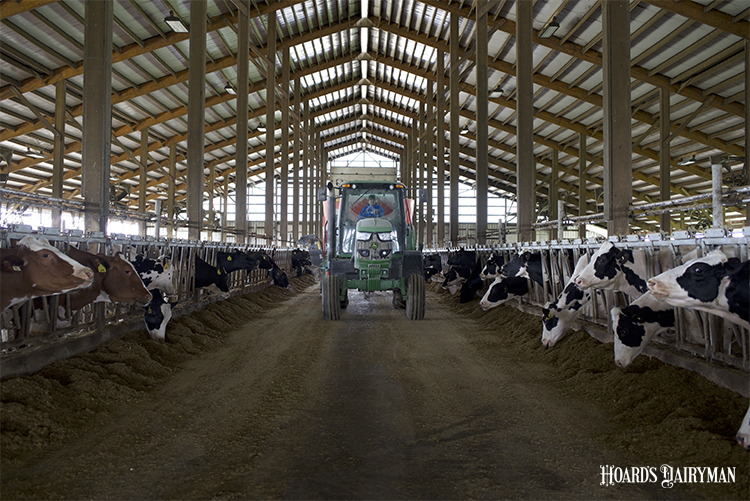
When it comes to feed costs, we are in uncharted waters and seem to be going “where no man has gone before.” No matter the popular saying you pick from a show like “Star Trek” or other venues, we are all experiencing an unprecedented level of feed cost stress.
At the moment, strong milk prices are helping, and most producers are keeping the pedal down and striving for high milk production. As these prices continue to climb, it is imperative that we keep looking for angles to better manage input cost.
A practice that a nutritionist might do is to be conservative with nutrient levels in forages and by-product feeds. Protein is the best example of this. If an alfalfa haylage sample shows 23% protein, the “careful” nutritionist might put that in the computer at 21%. Likewise, since by-products like corn gluten feed and distillers grain are known to be variable in nutrient content, conventional wisdom might be to use a conservative approach and put the protein level in the model at a point or two lower than the lab analysis indicates.
Next, let’s use these ingredients to build a heifer or dry cow diet and then a milk cow diet. I often see nonlactating dairy rations built with a little “cushion” to be sure we have enough protein for good growth. We need to be careful that we don’t have a heifer diet at 15.5% protein when the guidelines are closer to 14% and the actual requirement is based on metabolizable protein anyway.
And, to make it worse, considering the “careful and conservative” nutrient analysis entry into the ration model, we have ended up with two cushions. Not only did we not use the full protein level indicated on the forage analysis, but we also overformulated the ration protein to be sure we had enough.
More samples will pay dividends
To feel comfortable taking full advantage of analyzed protein values, it might be necessary to increase sampling frequency to be sure we are confident with the protein level used. As well, taking more frequent TMR (total mixed ration) samples can help us be sure our tighter formulation is not ending up lower than goals.
Much of the same dynamic can happen with milk cow rations but monitoring MUN (milk urea nitrogen) can help verify correct ration formulation for protein. With soybean meal approaching $500 per ton, running high MUNs is not smart. Using a strong ration model and formulating for metabolizable protein and various amino acids will likely result in feed cost savings. As with the heifer diets, more frequent TMR sampling might be in order, and try to feed for lower MUNs.
One more note on managing MUNs is the very high cost of urea. We often include a small amount of urea to be sure the rumen has plenty of fast nitrogen. When urea was $400 per ton, a little extra was not a big problem. At over $800 per ton, be sure the ration really needs it.
Dig a bit deeper
Are there other nutrient levels that can be evaluated in a more aggressive TMR analysis program?
Magnesium comes to mind.
We know magnesium is a very important macromineral for lactating cows. Forages have varying levels of magnesium, and lactation mineral formulas might be built to oversupply this important mineral just to be sure there is enough in the diet if the level in forages drops. Using lab analysis for magnesium in both the forages and the resulting TMRs can likely allow for less magnesium supplementation in the diet and thus reduced feed costs.
When feed costs are high, the feed and forage analysis budget should probably go up. Protein and various minerals can be more closely monitored, allowing for tighter formulation and lower feed costs. Evaluate ration urea feed rate and perhaps get more comfortable with a lower MUN. Being careful not to overfeed nutrients that don’t increase milk flow is a must in today’s environment. There is no room for loose formulations with current feed cost realities.








